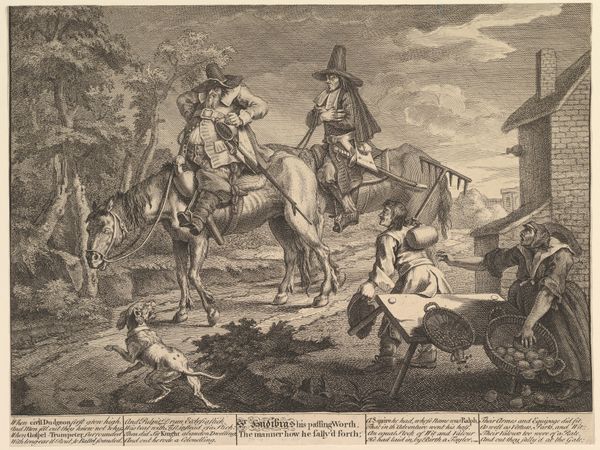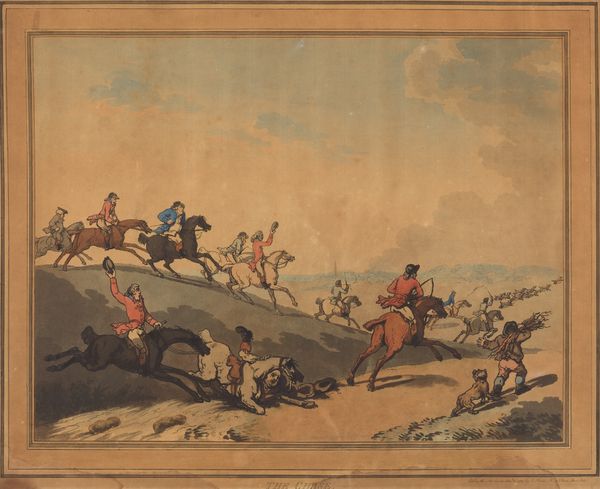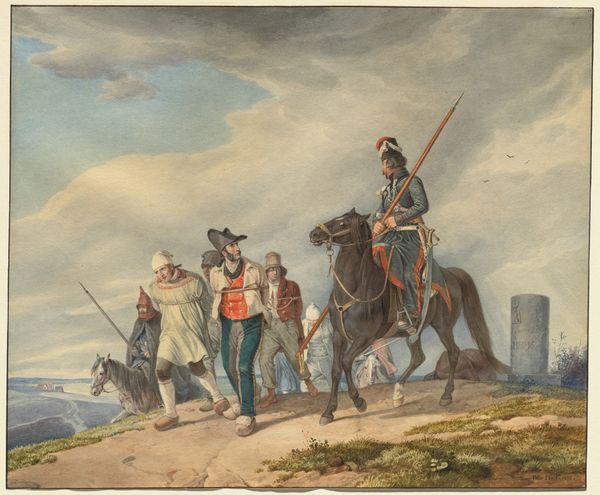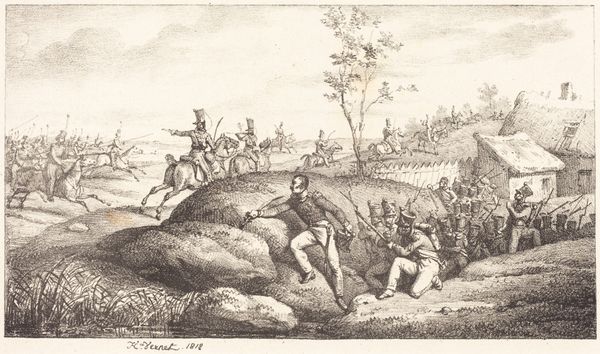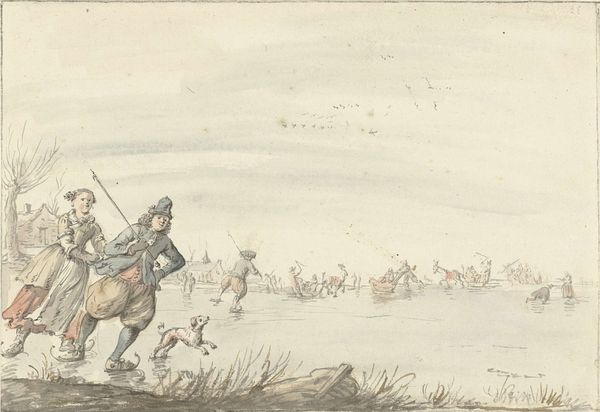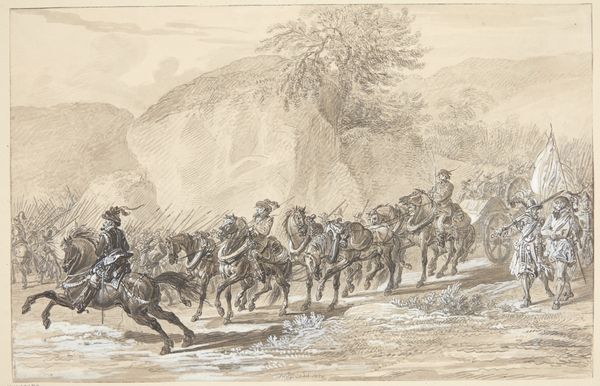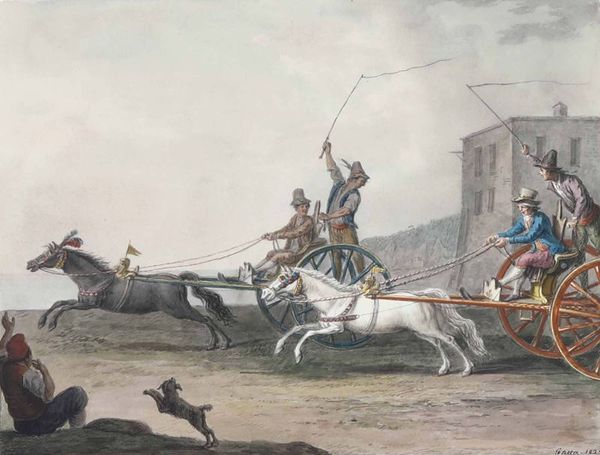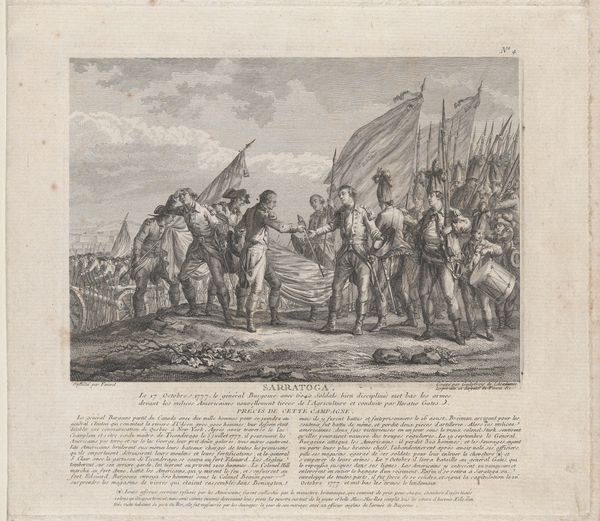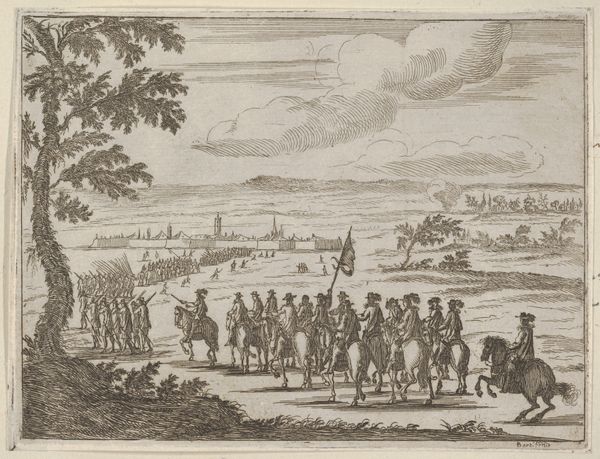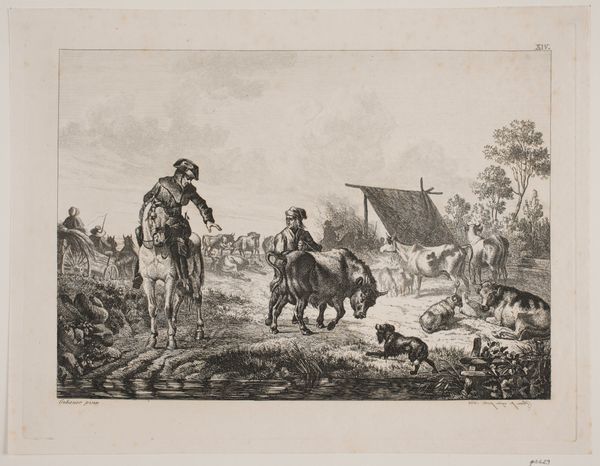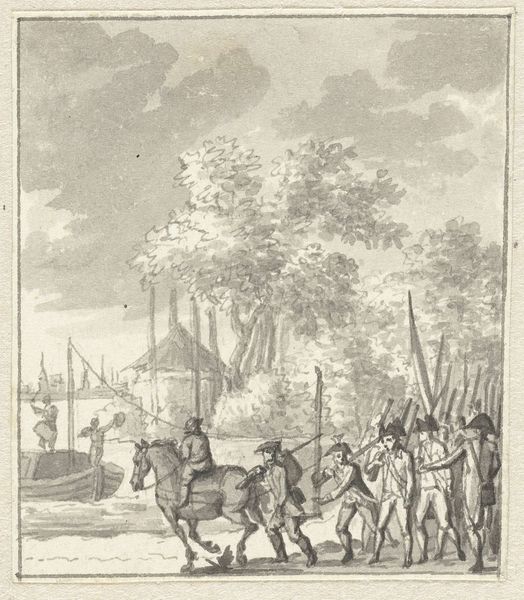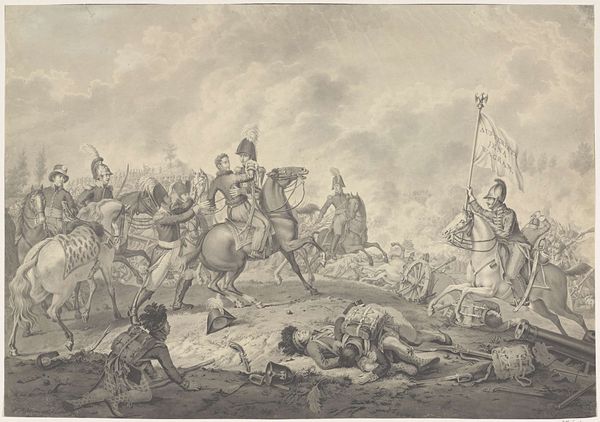
aquatint, print
aquatint
narrative-art
landscape
19th century
history-painting
Dimensions: 283 mm (height) x 350 mm (width) (bladmaal), 250 mm (height) x 318 mm (width) (plademaal), 214 mm (height) x 290 mm (width) (billedmaal)
Curator: This aquatint, titled "Tordenskjold undslipper de svenske dragoner," roughly translates to "Tordenskjold evading the Swedish dragoons," attributed to Niels Truslew, and created between 1762 and 1826, presents a dramatic scene of escape. Editor: My immediate sense is that of a theatrical landscape – it has the heightened drama and clear visual language reminiscent of staged events; that desperation palpable against the indifferent beauty of the seaside backdrop. Curator: Tordenskjold was a famous Dano-Norwegian naval hero, his daring exploits legendary. The pursuit motif is rife in this artwork. His attempt to evade the Swedish cavalry underscores themes of perseverance against adversity. Note the strategic placement of each figure - all focused, adding symbolic weight. Editor: Yes, it's a stark visual representation of power and resistance. We see the dynamics of imperialism and national identity played out, as he attempts to reach his escape. Curator: Looking deeper, there’s also an element of the psychological present in Truslew's decision to represent his figure entering the sea. Historically, the sea stands in art as a mediator of safety but equally chaos. The sea, in this sense, can represent transformation. Editor: Absolutely, that space where boundaries blur, a dangerous frontier between freedom and oblivion. Also, consider that historical narrative - it speaks to a very specific, culturally embedded need for heroic figures, to validate power and to rally a specific patriotic fervour. The dragoner are reduced to anonymous pursuers, emphasizing a sense of singular heroism. Curator: But perhaps that’s the magic, right? Through time and changing societal expectations, these heroic archetypes stand in the historical imagination, subtly shaping and reshaping cultural identities as societies project modern values backwards. Editor: Indeed. And perhaps by examining the artistic choices embedded here, the way the landscape is rendered, the use of color and light, the composition of the characters, we can engage and interpret how history impacts present understandings of conflict, nationhood and personal identity. Curator: A final thought on symbols, here – notice how nature plays a dual role, as both a refuge and a threat. Thank you for shining light on its nuances. Editor: The pleasure was mine. Thank you for illuminating the historical narrative behind this thrilling aquatint.
Comments
No comments
Be the first to comment and join the conversation on the ultimate creative platform.
